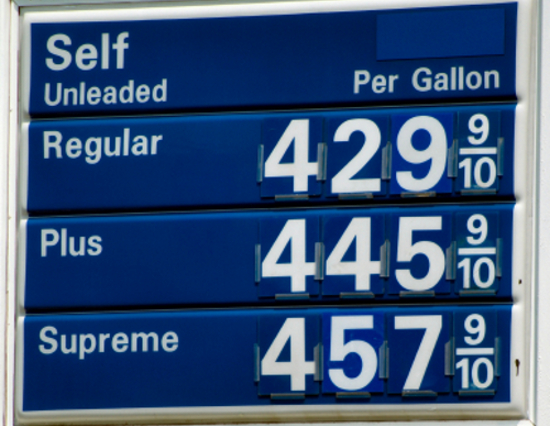This article by CFACT advisor Larry Bell originally appeared as an op-ed in Forbes on October 16, 2012.
[divider]
Beware of the warning that “where California goes, so goes the nation,” particularly when it comes from EPA Administrator Lisa Jackson. Speaking in October, 2009 at the Governor’s Global Climate Summit in Los Angeles, she touted the fact that climate change regulations involving national fuel economy and greenhouse gas standards have their “roots” in California, and that the rest of the United States is finally “catching up with what’s happening [there].”
Please, say it ain’t so!
While gasoline prices have doubled since Obama took office, California’s which typically lead the national average by about 30 cents have recently reached a historic high $4.65 per gallon, 84 cents higher than the national average. The immediate cause for the state’s record price was a power outage at an Exxon refinery in Torrance, following a Chevron refinery fire in August that further reduced production capacity. This supply shortage forced wholesalers to ration deliveries, in turn causing many retailers who buy on the spot market to close. There wasn’t really any other choice.
Why not? Well, owing to California’s self-inflicted fuel blend regulations, it wasn’t possible to import the unique seasonal formulation that the state requires from outside suppliers. Almost all refineries that were prepared to do this are located in California. And there are fewer of them. Over the last two decades, four refineries have been shut down rather than incur costly upgrades necessary to comply with increasingly stringent regulations. This left 14 remaining California refineries capable of blending the special fuels running at full capacity with no operating margin for interruptions. An outage anywhere in the supply line, even for routine maintenance, disrupts total capacity, and since importing fuel via tankers can take up to six weeks, California consumers get hit with a premium. That’s in addition to higher costs of meeting the price hickeys resulting from the extra five to 15 cents added by the special fuel standards…plus the nation’s second highest 50.5-cent gas tax (next to New York’s 51.3-cents).
Governor Brown responded to help relieve the recent fuel shortfall by telling state regulators to allow refiners to produce winter-blend gasoline earlier this year. But don’t expect any pump pain end anytime soon. That’s because it’s only one part of a much larger and scarier story covering the state’s entire energy arena.
For starters, beginning in November, California’s new cap-and-trade program will kick in, whereby businesses will be charged for emitting carbon and pass on the costs to customers. The new “climate change law” mandates a 30 percent cut in carbon emissions from cars, trucks, utilities and other businesses by 2020, to be accomplished with a web of new taxes and regulations. This will be a bonanza for alternative energy investors and producers, (wind, solar and other so-called “clean sources”) that can’t otherwise compete with fossils, but certainly not good news for gasoline consumers and electricity customers.
Thanks to their renewable energy portfolio standard, Californians already pay up to 50 percent more for their electricity than the rest of the country. On top of that, the state has upped its mandate to require that renewable fuels supply 33 percent of its electricity by 2020. Good luck with that.
Click here to read the rest of the article on Forbes.com.
